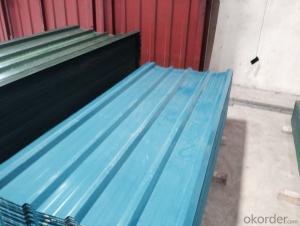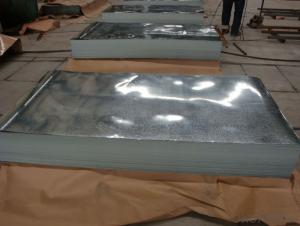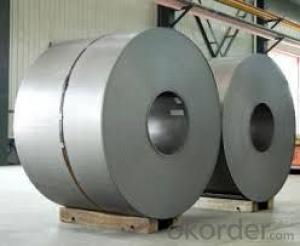color bond surface coating steel plate--XY003
- Loading Port:
- China Main Port
- Payment Terms:
- TT OR LC
- Min Order Qty:
- -
- Supply Capability:
- -
OKorder Service Pledge
OKorder Financial Service
You Might Also Like
Color bond surface coating steel plate :
more than ten years experiences, the products are sold to the domestic city and some international cities we strivc to develop production of color coating steel plate the plating (aluminum )zinc steel. Coil cheickness between 0.6mm and 1.5mm and the width from 600mm to 1250mm and a variety of high durability of color coating steel plate.
the company has multiple layer patterns for customers to choose The company provides products deep processing services ,meet the various needs of customers on board specifications All of out products comply with international quality standards and are greatly appreciated in a variety of different markets throughout the world if you ate interested in any of our products or would like to discuss a custom order please feel free to contact us we are looking forward to forming successful business relationships with new clients around the world in the near future.
We can design the color and thickness according to customers' requirements. The delivery time is only 30 day after you confirm the order.
- Q:Can steel sheets be used for signage or advertising purposes?
- Yes, steel sheets can be used for signage or advertising purposes. Steel is a durable and versatile material that can withstand outdoor conditions, making it suitable for outdoor signage. It can be cut, shaped, and painted to create eye-catching and long-lasting signs for advertising purposes.
- Q:What are the different standards and certifications for steel sheets?
- There are several different standards and certifications for steel sheets, including the American Society for Testing and Materials (ASTM) standards, the International Organization for Standardization (ISO) certifications, and the European Committee for Standardization (EN) standards. These standards and certifications ensure that steel sheets meet specific requirements for quality, strength, durability, and safety. They help to standardize the production and use of steel sheets across different industries and regions, providing assurance to consumers and businesses alike.
- Q:What is the typical elongation of a steel sheet?
- The typical elongation of a steel sheet can vary depending on the specific grade and thickness of the sheet. However, as a general guideline, the typical elongation for a steel sheet can range from 20% to 40% before it reaches its breaking point.
- Q:What's the difference between hot-rolled seamless steel tube and cold-rolled seamless steel tube?
- Cold rolled seamless steel pipe (DIAL) in general, steel pipe for low and medium pressure boiler tube, high-pressure boiler steel pipe, alloy steel pipe, stainless steel pipe, oil cracking tube and other steel tube, including carbon thin-walled steel, alloy thin-walled steel, stainless steel, thin steel tube.
- Q:What are the different methods of cutting steel sheets?
- There are several different methods of cutting steel sheets, including shearing, plasma cutting, laser cutting, waterjet cutting, and abrasive cutting. Each method has its own advantages and disadvantages depending on factors such as the desired precision, speed, cost, and material thickness.
- Q:How do steel sheets perform in abrasive environments?
- Steel sheets perform well in abrasive environments due to their high strength and durability. The hardness of steel allows it to resist the wear and tear caused by abrasive materials, such as sand, gravel, or dust particles. Additionally, the smooth surface of steel sheets helps to reduce friction and prevent the accumulation of debris, further enhancing their performance in abrasive environments. Steel sheets can withstand the impact of abrasive materials without deformation or damage, making them ideal for applications such as construction, mining, and manufacturing industries. However, it is important to note that certain types of steel, such as stainless steel, are more resistant to corrosion and rust, which can also be factors in abrasive environments. Regular maintenance and protective coatings can further enhance the performance and longevity of steel sheets in abrasive environments.
- Q:What is the average lead time for manufacturing steel sheets?
- The average lead time for manufacturing steel sheets can vary depending on various factors such as the size and complexity of the order, the current production capacity, and any specific requirements. However, on average, it typically ranges from a few weeks to a couple of months.
- Q:Are steel sheets suitable for high-vibration environments?
- Steel sheets are generally suitable for high-vibration environments due to their inherent strength and durability. Steel is known for its excellent mechanical properties, including high tensile strength and resistance to fatigue. These qualities make steel sheets capable of withstanding vibrations without significant deformation or failure. Moreover, steel sheets have the ability to dampen vibrations due to their mass and stiffness. This makes them effective in reducing the transmission of vibrations to other components or structures. Steel sheets can absorb and dissipate the energy generated by vibrations, minimizing the potential for damage or disruption. Additionally, steel sheets can be designed and manufactured to meet specific requirements for high-vibration environments. They can be reinforced or treated with coatings to enhance their resistance to corrosion, wear, and fatigue, further improving their suitability for such conditions. However, it is essential to consider the specific characteristics and intensity of the vibration environment when determining the suitability of steel sheets. Factors such as frequency, amplitude, and duration of vibrations should be taken into account. In some extreme cases, alternative materials or specialized designs may be necessary to ensure optimal performance and longevity. In conclusion, steel sheets are generally suitable for high-vibration environments due to their strength, durability, and ability to dampen vibrations. However, a thorough evaluation of the specific conditions is crucial to determine the most appropriate solution for each application.
- Q:How do steel sheets perform in low-temperature environments?
- In low-temperature environments, steel sheets typically demonstrate excellent performance. The presence of low temperatures does not significantly impact the mechanical properties of steel, such as its strength and toughness. Steel possesses a low coefficient of thermal expansion, which means it does not undergo significant contraction or expansion when exposed to temperature fluctuations. This characteristic enables steel sheets to maintain their shape and structural integrity even in cold conditions. Furthermore, steel exhibits remarkable resistance to brittle fracture at low temperatures. It possesses excellent impact resistance, allowing it to absorb energy without fracturing. As a result, steel sheets are suitable for use in low-temperature environments where materials must endure heavy loads or sudden impacts, such as in cold storage facilities or offshore structures in Arctic regions. It is important to note, however, that certain types of steel, particularly those with high carbon content or low alloy steels, may experience reduced toughness and ductility at extremely low temperatures. In such cases, specific precautions may be necessary. These precautions may include utilizing steel grades specially designed for low-temperature applications or implementing appropriate insulation measures to prevent rapid temperature changes. Overall, steel sheets are generally dependable and exhibit excellent performance in low-temperature environments due to their strength, toughness, and resistance to brittle fracture. Nevertheless, the precise performance of steel in cold conditions may vary depending on the composition and quality of the steel employed.
- Q:Are steel sheets suitable for oil and gas pipelines?
- Yes, steel sheets are suitable for oil and gas pipelines. Steel is often used in pipeline construction due to its high strength, durability, and resistance to corrosion. It can withstand the harsh conditions and pressures associated with transporting oil and gas over long distances. Additionally, steel sheets can be easily formed and welded together to create pipelines of various sizes and shapes, making them a reliable choice for oil and gas industry applications.
1. Manufacturer Overview |
|
|---|---|
| Location | |
| Year Established | |
| Annual Output Value | |
| Main Markets | |
| Company Certifications | |
2. Manufacturer Certificates |
|
|---|---|
| a) Certification Name | |
| Range | |
| Reference | |
| Validity Period | |
3. Manufacturer Capability |
|
|---|---|
| a)Trade Capacity | |
| Nearest Port | |
| Export Percentage | |
| No.of Employees in Trade Department | |
| Language Spoken: | |
| b)Factory Information | |
| Factory Size: | |
| No. of Production Lines | |
| Contract Manufacturing | |
| Product Price Range | |
Send your message to us
color bond surface coating steel plate--XY003
- Loading Port:
- China Main Port
- Payment Terms:
- TT OR LC
- Min Order Qty:
- -
- Supply Capability:
- -
OKorder Service Pledge
OKorder Financial Service
Similar products
New products
Hot products
Hot Searches
Related keywords



























